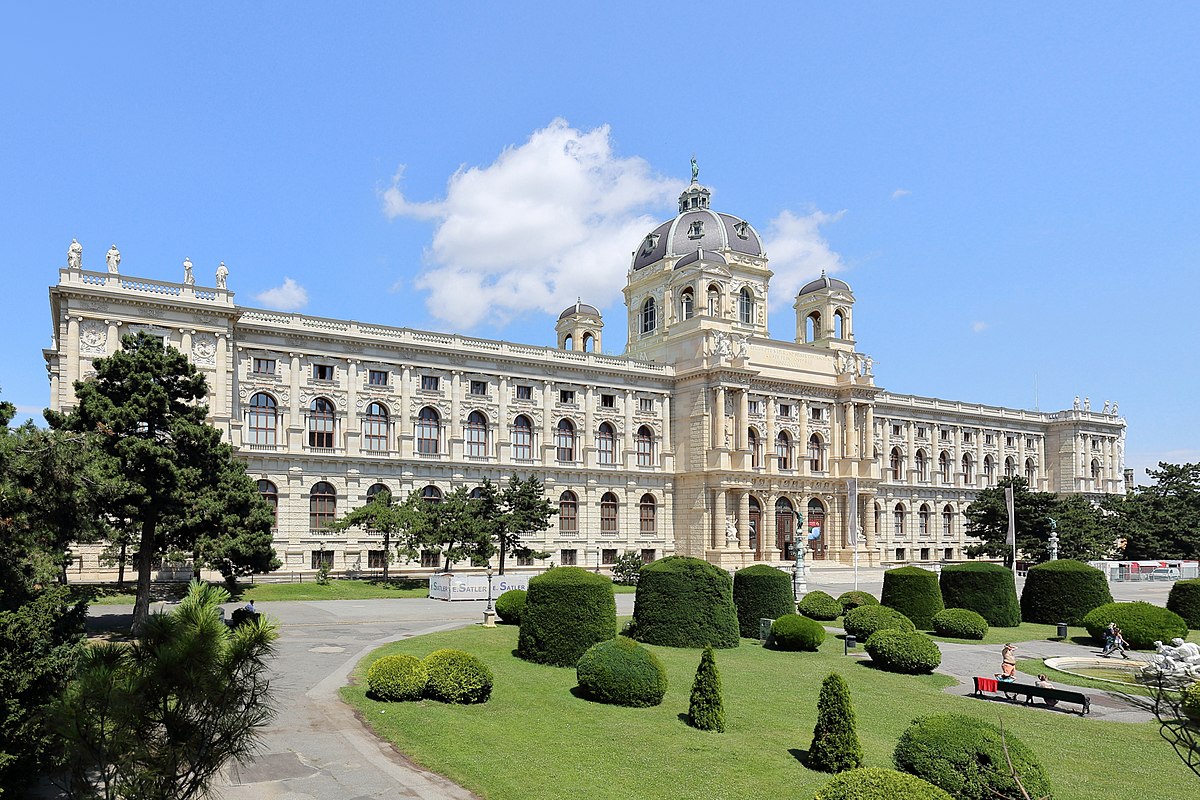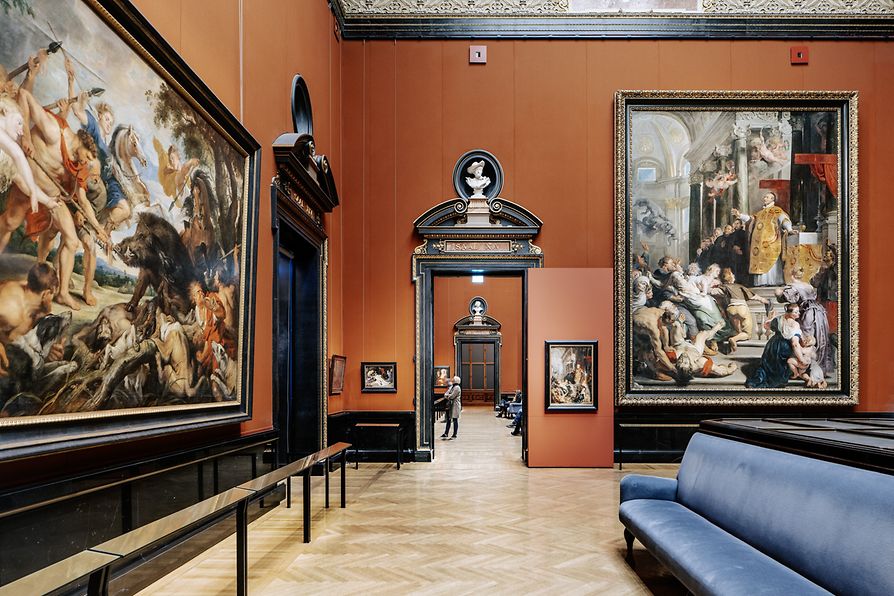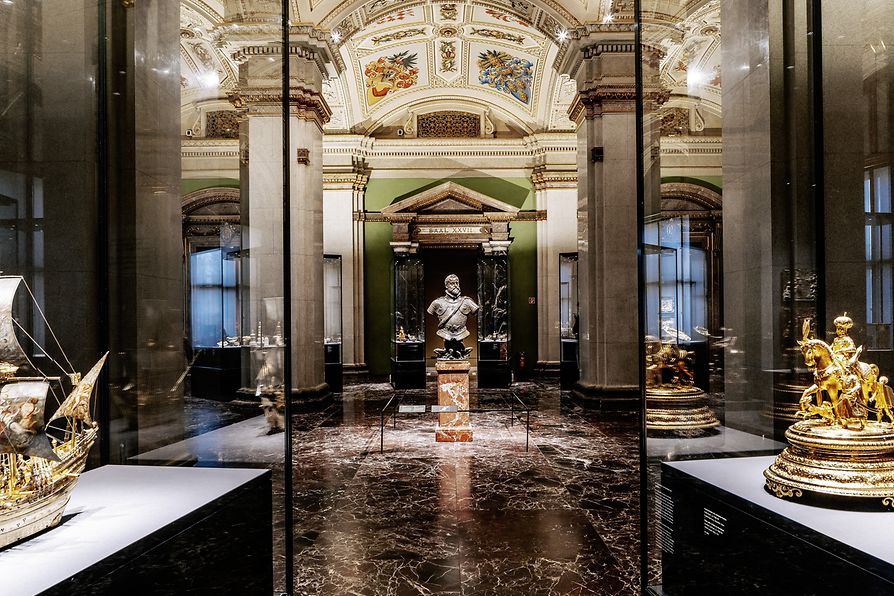Kunsthistorisches Museum of the history of art of Wien

The Kunsthistorisches Museum (Museum of the history of art of Wien), which in 2012 counted 1,351,940 visitors, is one of the main museums in Vienna and one of the oldest and richest in the world. The main building, topped by a 60-meter-high octagonal dome, is located in Maria Theresien-Platz, along the Ringstraße that surrounds the Innere Stadt district.

The Museum was officially inaugurated on October 17, 1891 in the presence of Emperor Franz Joseph I of Habsburg after more than thirty years from the first commission. From 22 October it was open to the public. The building overlooks the Maria-Theresien-Platz, mirroring the Naturhistorisches Museum (historical-naturalistic museum). The two museums were commissioned by the emperor in 1858 to contain the immense collection of Habsburg works of art and to make their heritage accessible to all. The competition for the construction of the buildings was launched in 1867 and won by the architects Carl von Hasenauer and Gottfried Semper. The first stone was laid, without too many ceremonies, on November 27, 1871. The facades recall the Italian Renaissance style and the interiors are decorated with marble, stucco and gold ornaments and paintings.

One of the museum's most important sculptures, Benvenuto Cellini's Salt Cellar, was stolen on 11 May 2003 and recovered on 21 January 2006 in a box, buried underground, in a forest near the town of Zwettl, Austria. It was the largest art theft in Austrian history.

The museum's original collection belongs to the Habsburgs, particularly as regards the portraits and armor of Ferdinand II of Austria, the collection of Emperor Rudolf II of Habsburg and the collection of paintings by Leopoldo William of Habsburg.
The museum exhibits works by Antonello da Messina, Giovanni Bellini, Tiziano Vecellio, Correggio, Giorgione, Lorenzo Lotto, Andrea Mantegna, Tintoretto, Veronese, Guido Reni, Jan Brueghel the Elder, Jan Brueghel the Younger, Giuseppe Arcimboldo, Agnolo Bronzino, Antonio Canova , Michelangelo Merisi da Caravaggio, Albrecht Dürer, Gustav Klimt, Parmigianino, Raffaello Sanzio, Pieter Paul Rubens, Jan Steen, Jan van Eyck, Diego Velázquez, Johannes Vermeer, Johann Gottfried Auerbach.
In addition to the paintings, there are also other collections: the oriental Egyptian collection (Ägyptisch- Orientalische Sammlung), the collection of Roman and Greek antiquities (Antikensammlung), that of sculpture and decorative arts (Kunstkammer), the numismatic cabinet (Münzkabinett), the library (Museumsbibliothek).
Video: Kunsthistorisches Museum of the history of art of Wien
Map: Kunsthistorisches Museum of the history of art of Wien
Address: Burgring 7, 1010
Vienna (Austria)
Latitude: 48.205359569080414
Longitude: 16.359511613845825
Site: http://www.nhm-wien.ac.at/...
vCard created by: CHO.earth
Currently owned by: 00002676
Type: Building
Function: Museum
Creation date:
Last update: 08/09/2022
vCard Value: $6,50
vCard Views: 757